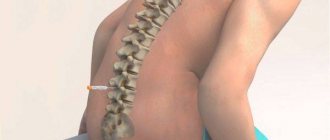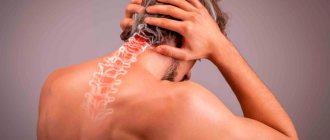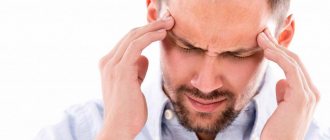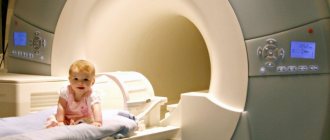Pain above the eyebrows - causes
Trigeminal neuralgia
Trigeminal neuralgia is a condition that causes sharp, intense pain in the facial area. The trigeminal nerve connects the brain to the face, allowing a person to sense touch and changes in temperature.
Trigeminal neuralgia usually affects only one side of the face, but in rare cases it can affect both sides.
Some people with this condition may experience stabbing pain that feels like an electric shock. Others may have constant pain and burning in the facial area.
Associated symptoms
An eyebrow can hurt in completely different ways. For some it is periodic pain that occurs from time to time, for others it is constant. Listen carefully to your own feelings: what else, besides your eyebrow, is bothering you? Are there any accompanying symptoms such as swelling, swelling , bleeding in the eye? All of them will help in making the correct diagnosis.
Frontit
- Swelling in the eye area;
- photophobia;
- impaired sense of smell;
- temperature increase;
- pain intensifies when pressed;
- The pain mainly occurs above the eyebrow, spreading to the forehead.
Inflammation
- The eyebrow hurts with a runny nose, sinusitis, sinusitis, this is always accompanied by nasal congestion;
- the pain is slight, dull, aching;
- but with sinusitis, the pain in the eyebrow is much worse, most often the bridge of the nose.
Neuralgia
- Sharp, shooting pain;
- many people ask why their eyebrows hurt when pressed - this is typical for neuralgia;
- noise in ears;
- changes in vision;
- damage to the optic nerve, due to which pupil movement may be impaired;
- retinal hemorrhage;
- the eyebrow bone hurts.
Migraine
- Pulsating, sharp pain that radiates to the back of the head through the temple and eye socket;
- the attack of pain is very long: from several hours to several days;
- dizziness;
- noise in ears;
- nausea turning into vomiting;
- severe fatigue, irritation.
Encephalitis, meningitis
- Bursting pain;
- discomfort in the temples and back of the head.
Infringement of neck vessels
- Deterioration of vision and hearing;
- fainting;
- disturbance of mental activity, memory;
- insomnia.
Injury
- Bleeding;
- violation of orientation in space;
- nausea, vomiting;
- dizziness;
- my eyebrow is swollen and hurts.
As you can see, with different diseases the pain in the eyebrow area differs. By analyzing the accompanying symptoms, you can guess what is happening to you. But under no circumstances should you diagnose yourself. The only correct decision in this situation is not to hesitate and immediately seek help from a doctor. But who is responsible for this area of the face? Which specialist is best to make an appointment with?
Be careful. Sometimes, with a severe bruise of the eyebrow, there may be no cut and corresponding bleeding. But the pain after it can be simply unbearable. Such symptoms may indicate internal hemorrhage and closed head injury.
Cluster headache
A cluster headache is a severe headache that can occur one to eight times a day and last from 15 minutes to 3 hours each time.
People may experience stabbing pain, often either behind the eyebrow and eye, or around the temples. This pain and other symptoms usually affect one side of the head.
Cluster headache symptoms
- red, watery eyes;
- runny nose;
- flushed face;
- drooping eyelid;
- hyperkinesis;
- inability to lie still.
Shingles
Shingles is a condition that affects the nerves. It occurs in localized areas, usually on one side. These areas may include the face and neck.
Symptoms of herpes zoster
- a painful, fluid-filled rash;
- shooting pain;
- tingling or numbness sensation;
- burning;
- itching;
- fever and chills;
- nausea;
- headache;
- loss of vision.
People should see a doctor immediately if they notice blisters on their face, especially if they are close to the eyes.
Why did my eyebrow become swollen?
If the eyebrow is slightly swollen and painful, it is quite difficult to immediately determine the diagnosis. If you don’t know exactly what caused this, you should contact a specialist who will conduct a visual examination and, if necessary, prescribe tests.
When visiting a doctor:
- tell us what preceded the appearance of swelling;
- explain the nature of the complaints;
- Allow the swollen area to be examined and felt.
The reasons why the eyebrow is swollen and painful are most often the following:
1. Injuries.
It is very easy to injure the brow ridge; a single contact with a sharp or hard object is enough to cause swelling. If the impact on the eyebrow was strong enough (hit with a ball, fist, etc.), you may encounter an orbital fracture (crack). It is often the cause of swelling above the eyebrow and pain. To determine the severity of the injury, a visit to a traumatologist and an X-ray examination will be required.
An orbital fracture is accompanied by the following symptoms:
- swelling of the brow ridge;
- redness of the eye;
- swelling of nearby tissues;
- headache.
If the injured area is swollen and painful, a combination of warm compresses and anti-inflammatory agents is used.
2. Cutting the eyebrow.
In this case, we are talking about damage to soft tissues. If the reason that the eyebrow is swollen and painful is its dissection, then the swelling is removed with synthetic adhesives with cinacrylates. They are characterized by high strength, rapid hardening, and the absence of negative effects on the human body.
Cynaacrylates are used if the damage is small (no more than 1x3 cm). By fixing the skin and closing the wound, the swelling of the brow ridge will decrease. Modern medical technologies also involve the use of ultrasonic welding of dissected tissues.
Recommended reading:
- What not to do after eyelash extensions
- Which eyelash extension to choose for yourself
- Eyelash care: advice from professionals
3. Botox injections.
Many women want to stay young and beautiful for as long as possible. At the same time, wrinkles are not associated with beauty, which means they require taking certain measures. Some cosmetic procedures involve the use of products that are potentially harmful to the body, such as botulinum toxin serum.
Botox was originally used to treat muscle pathologies. Due to its properties that cause muscle immobility, the toxin began to be used in cosmetology, paralyzing the facial muscles and thereby reducing the visual appearance of deep wrinkles. Due to the potential danger of the drug, the experience and qualifications of the specialist performing cosmetic procedures are important. Injecting a toxin into the wrong place can lead to negative consequences, among which the fact that the injection site is swollen and painful will be the lesser evil.
If the procedure is performed poorly, there is a high probability of the following negative consequences:
- muscle swelling;
- muscle stiffness;
- allergic reactions;
- the appearance of a rash on the skin of the face;
- pain in the muscles of the face and neck.
The appearance of the above symptoms associated with the administration of Botox requires immediate contact with a medical facility.
4. Ingrown hairs.
Ingrown hairs can cause your eyebrows to become swollen and painful. Ingrown hairs are caused by improper hair removal.
The reason for the appearance of ingrown hairs is violations during their removal, regardless of the chosen method of getting rid of unwanted hair: plucking with tweezers, hair removal, threading, shaving.
The hair removal process damages the follicles. The latter are blocked and prevent the hair from sprouting - it begins to grow inside the epidermis. And if the pores are filled with keratin and dead tissue, then the eyebrow swells and hurts. Despite the absence of a direct threat to life and health, measures must be taken as soon as possible.
If the eyebrow is swollen and painful due to ingrown hairs, then treatment may be as follows:
- using warm compresses several times a day;
- use of antibacterial and antiseptic ointments;
- use of drugs that relieve itching;
- the use of corticosteroids that relieve inflammation.
If the eyebrow is swollen above the eye and hurts not due to folliculitis, but after the hair removal procedure, then this is not a cause for concern. The duration of unpleasant symptoms is short; you just need to properly care for your face.
5. Waxing.
If your eyebrow is swollen and painful, this may be caused by improper waxing technology. The result is damage to the hair follicles and clogged pores. If keratin and dead skin cells have accumulated inside the latter, then the likelihood of painful bumps increases.
Temporarily avoiding the waxing procedure will help to minimize the unpleasant sensations caused by swollen and painful brow ridges; in this case, special creams are used to eliminate itching. If infection occurs and the lymph nodes are swollen, you cannot do without qualified medical care.
6. Allergy or irritation.
If the eyebrow is not only swollen and hurts inside, but also itching is present among the unpleasant sensations, the reason may be an allergic reaction. The body can react in this way to the use of low-quality or inappropriate decorative or skincare cosmetics, medicines, certain foods, and vitamins.
If you have an allergy, you should see a doctor as soon as possible, since the condition can seriously and quickly worsen, not limited to the fact that the area above the eyebrows is swollen and painful.
7. Swelling after eyebrow tattooing.
Eyebrow tattooing involves piercing the skin with the thinnest blades and injecting a dye into the subcutaneous layer. Since during this process the integrity of the epidermis is disrupted, swelling is a very common reaction. You may also experience that your eyebrow is swollen and painful.
You can reduce pain by using a cold compress, the main thing is that it is not frozen and wet, since moisture on the treated skin is prohibited. In addition, cosmetologists recommend special formulations that relieve discomfort.
8. Swelling of the sinuses.
Inflammation that occurs inside the sinuses - called sinuses - is called sinusitis and can also cause the eyebrow to become swollen and painful. The sinuses are located behind the facial bones, are filled with air and belong to the nasal cavity. Sinusitis can be caused by allergic reactions, viral, bacterial or fungal infections. In mild cases, no special treatment is required; unpleasant symptoms disappear on their own after a short time.
There are several paranasal sinuses located on the face. The types of sinusitis depend on the specific location of the inflammation. If the brow ridges and the frontal part of the head are swollen and painful, then we are talking about frontal sinusitis, inflammation of the frontal sinuses. The disease requires contact with a specialist and proper treatment, as serious complications may develop.
Sign up for eyelash extensions at Anna Klyuchko's studios with a 25% discount until October 13
12 studios throughout Moscow, St. Petersburg, Nizhny Novgorod and Tula
223 masters for every taste
High-quality service with a 7-day guarantee
Regular promotions and gifts for clients
Full volume 1990₽ 1492₽ Double volume 2590₽ 1942₽ Triple volume 2890₽ 2167₽ Hollywood volume 3400₽ 2550₽
Book 25% discount
9. Furuncle.
If staphylococcus gets into the hair follicle, an inflammation called a boil develops. This disease can also cause the eyebrow to become swollen and painful. A boil can develop due to:
- general hypothermia of the body;
- colds;
- failure to comply with personal hygiene rules;
- use of low-quality decorative or skincare cosmetics;
- violation of metabolic processes in the body;
- chronic diseases;
- mechanical damage to the skin, including complications after piercing or tattooing performed in violation of technology.
Sinusitis
Sinusitis is an inflammation of the sinuses. This can put a lot of pressure on the facial area and people may feel pain around the eyebrows, nose, forehead and cheeks.
Symptoms of sinusitis
- stuffy nose;
- cough;
- thick, yellow or green mucus from the nose;
- mucus running down the throat.
Sinusitis can be either acute or chronic. Symptoms of acute sinusitis usually resolve within a week or 10 days. If symptoms do not improve with treatment and last longer than 12 weeks, a person may develop chronic sinusitis.
Diagnostics
What to do if your eyebrow hurts? Having determined the symptoms of possible discomfort over the eye and the causes of its occurrence, you need to seek help from a therapist, traumatologist, or ophthalmologist. In addition, you may need to consult an ENT specialist, neurologist, neurosurgeon, or surgeon. In any case, you should start with a general practitioner - a therapist, who, if there is evidence for it, will refer you to a specialized specialist for further consultation.
The doctor, to clarify the diagnosis, may prescribe certain examinations:
- X-ray or ultrasound of the nasal sinuses;
- probing of the sinuses;
- examination of the nasopharyngeal cavity using a video endoscope;
- MRI, CT;
- EEG;
- blood analysis;
- passing nasal cultures.
If signs of a specific pathology are detected, additional clarifying examinations may be prescribed.
Doctor, during examination:
- clarifies the patient's complaints;
- conduct a visual and tactile inspection;
- will collect anamnesis.
Temporal arteritis
Giant cell arteritis, or temporal arteritis, is a condition that affects the blood vessels along the side of the head.
Inflammation of these blood vessels can cause facial pain and other symptoms such as:
- jaw pain;
- temporary loss of vision;
- fever;
- severe headaches;
- dizziness;
- difficulty swallowing or sore throat.
According to the Arthritis Foundation, people over 50, especially women, are more likely to develop giant cell arteritis.
Treatment and home remedies
Treatment for eyebrow pain depends on the cause:
- Headaches and migraines: Painkillers, as well as more rest and sleep, may help.
- Severe or frequent migraine episodes: Your doctor may prescribe pain medications.
- Cluster headaches: Your doctor may recommend pain medications or an oxygen mask to prevent a cluster headache.
- Shingles: Rest, a cool compress, and calamine lotion can help soothe the symptoms of shingles until the infection clears up.
- Glaucoma: Taking eye drops daily may help prevent vision loss in people with glaucoma. Beta blockers and alpha agonists also help reduce fluid buildup in the eye.
- Sinusitis: Patients can take anti-inflammatory medications and nasal sprays to treat sinusitis. Pain medications, adequate rest, and proper hydration may also help reduce symptoms.
- Trigeminal neuralgia: Your doctor may prescribe medications or recommend surgery.
- Giant cell arteritis: Corticosteroids can effectively treat the symptoms of giant cell arteritis.
When to see a doctor?
A person should see a doctor if eyebrow pain is severe, persistent, or accompanied by other symptoms.
People with eyebrow pain should seek immediate medical attention if they also have the following symptoms:
- severe pain or swelling of the face;
- swelling or redness around the eyes;
- confusion or feelings of disorientation;
- sudden severe headache;
- drowsiness;
- fever;
- rash;
- nausea and vomiting.
People should see a doctor if they have symptoms of any of the following conditions:
- shingles;
- giant cell arteritis;
- severe or frequent migraine episodes;
- trigeminal neuralgia;
- glaucoma.
Probable causes of the phenomenon
Why does my eyebrow hurt? There can be many reasons for this problem.
Very often, such a problem does not have dangerous preconditions, being only a violation of the correct lifestyle. The following factors may influence the appearance of unpleasant sensations:
- overvoltage;
- intoxication of the body;
- staying at the computer for a long time;
- abuse of unhealthy foods (spicy, salty, fried);
- high level of physical activity;
- prolonged mental stress.
Very often, discomfort is a consequence of cosmetic procedures. For example, tattooing, during which pigment is injected into microscopic incisions on the surface of the eyebrows. In addition to pain, swelling and redness may persist here.
If the procedure is performed incorrectly, discomfort may also occur. Very often this symptom occurs when the threads are inserted incorrectly.
We must not forget about injuries that do not necessarily accompany hematomas. Sometimes they can only manifest as pain.
Any pain is divided according to the nature of its manifestation:
- fascicular: here the unpleasant sensations attack, repeat every 20 minutes, lasting up to 3 hours;
- with impact in the teeth;
- discomfort from excessive tension;
- shingles, with general weakness, loss of appetite;
- migraine, where the pain is concentrated on the bridge of the nose, in the temples, and intensifies with loud sounds and bright light.
Diseases
Often the problem lies in the presence of certain diseases:
- sinusitis (inflammation of the sinuses, their expansion or contraction, the main symptom here is a prolonged runny nose);
- frontal sinusitis;
- osteochondrosis;
- diseases of the central nervous system;
- flu;
- ARVI;
- increased intracranial pressure;
- meningitis, encephalitis (dangerous diseases that can only be diagnosed by specialists through examination and certain tests): here, pain is localized in a certain area, body temperature changes;
- inflammation of the trigeminal nerve (only a neurologist can help in diagnosing the disease);
- intracranial pressure;
- brain tumors;
- colds, viruses, other infections (here it is especially important not to delay so as to prevent the development of rather dangerous complications).
We recommend reading: Beard does not grow under the lower lip
Lifestyle
Unpleasant sensations that arise in the area of the brow ridges are not always symptoms of the presence of dangerous or not so dangerous diseases. They can also occur in absolutely healthy people, being a sign that the chosen lifestyle is not correct.
Pain occurs when:
- frequent smoking, due to sagging blood vessels that spasm;
- alcohol intoxication;
- frequent consumption of spicy, fatty foods, which negatively affect the condition of the vascular walls;
- physical fatigue;
- working at a computer screen for a long time.
Cosmetic procedures
Often the problem develops after cosmetic procedures:
- tattooing (unpleasant sensations disappear within a few days);
- performed not according to the rules of plastic surgery of the brow ridges and other areas around the eyes;
- allergic reaction to used cosmetics.
In order not to waste precious time that may be needed to treat diseases, this symptom should not be ignored, even if it seems completely harmless. It is imperative to seek medical help so as not to miss the development of dangerous brain damage.
Summary
People may experience eyebrow pain for many reasons. Sinusitis or headaches can lead to increased pressure and pain in the eyebrow area, which should go away as soon as the cause is eliminated. Other times, eyebrow pain is due to an underlying condition such as glaucoma.
If people experience frequent or severe pain around the eyebrows or notice other symptoms, they should consult a doctor immediately.
Another article on the topic: Drinking small amounts of caffeine every day does not cause migraines.
Drug therapy
Treatment of a particular disease is prescribed in strict accordance with the diagnosis that was made to the patient. This could be a recommendation to reduce the rhythm of life, limit work at the computer, or take antibacterial agents.
In particularly advanced cases, for example, with sinusitis, surgical intervention may be indicated.
NSAIDs
Nonsteroidal anti-inflammatory drugs are a group of drugs that are used to provide first aid to patients suffering from pain of unknown etiology. These drugs simultaneously have analgesic and minor anti-inflammatory effects.
NSAIDs include medications containing the following substances:
- metamizole sodium;
- acetylsalicylic acid;
- paracetamol;
- ibuprofen;
- nimesulide.
Non-steroidal anti-inflammatory drugs include:
- Analgin;
- Aspirin;
- Nurofen;
- Paracetamol;
- Nise, Dolgit.
The drugs are characterized by a small number of side effects, as well as a pronounced analgesic effect. If you take tablets to relieve spasms together with them, you can quickly get rid of pain associated with narrowing of the vascular walls.
We recommend reading: How to lighten eyebrow tattoos at home
Caffeinated products
If there are disturbances in the normal functioning of blood vessels, it can be difficult to do without the use of caffeine-containing products. These are complex preparations that simultaneously contain several components:
- Tetralgin;
- Pentalgin;
- Citramon.
Every person taking such medications must understand that their use is a temporary measure to relieve acute manifestations of the disease. After symptoms are relieved, if they still recur periodically, you should definitely seek help from a doctor in order to establish the correct diagnosis and prescribe adequate therapy.
Sedatives
The use of sedatives is indicated in the presence of pain caused by excessive nervous tension, constant exposure to stressful situations, and a large amount of physical and mental activity.
Sedative medications should be prescribed by a doctor only if there are strict indications, with a carefully selected dosage regimen.
Taking such drugs at your own discretion, without medical supervision, is strictly prohibited.
Sedatives
In order to calm the nervous system, a specialist may prescribe the patient to take sedative medications. They relieve a person of stress, which is most often the cause of unpleasant sensations in the bridge of the nose.
Experts recommend taking the following medications:
- Afobazole;
- Phenibut;
- Novo-Passit;
- Persen;
- Sanason-Lek.









